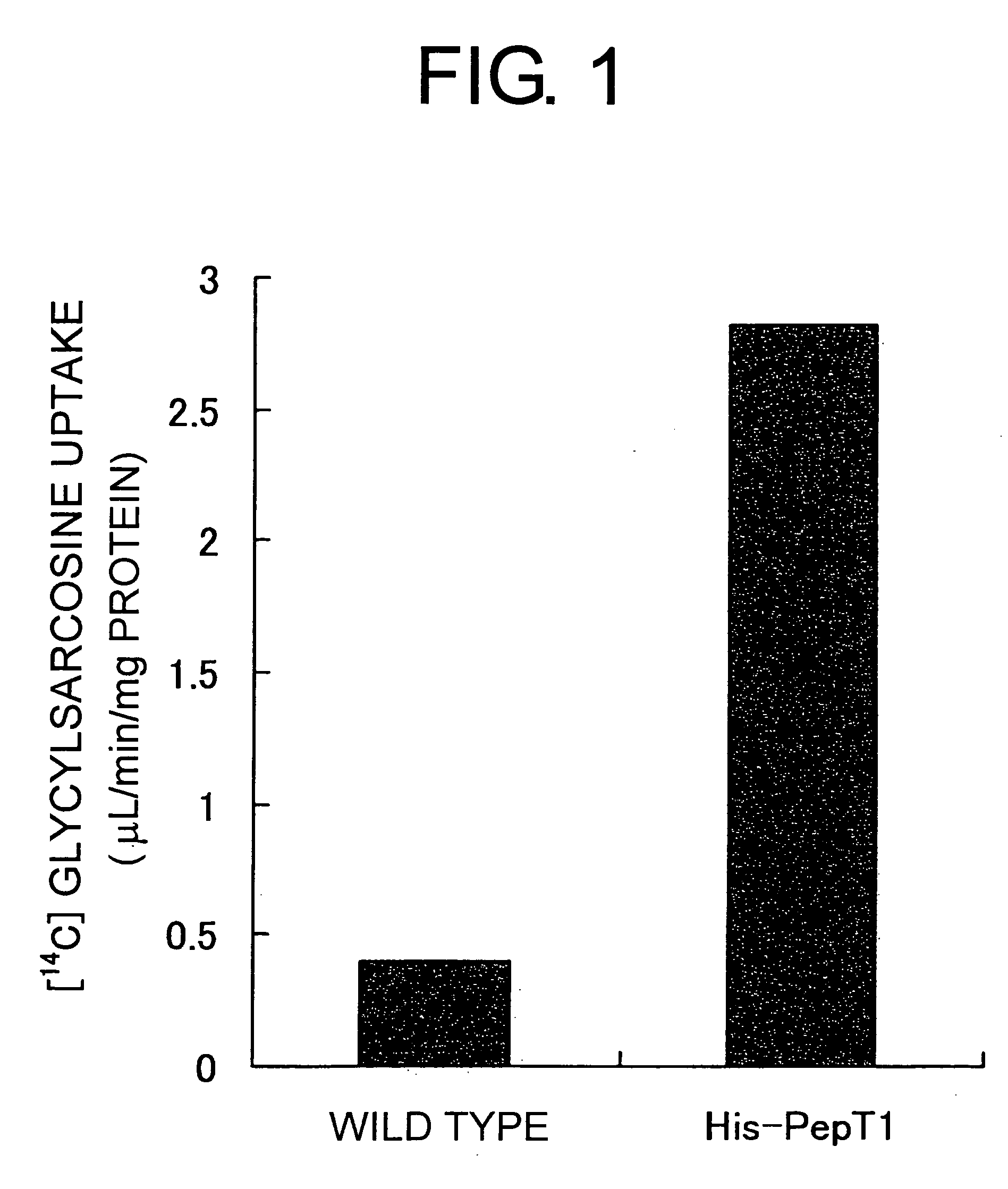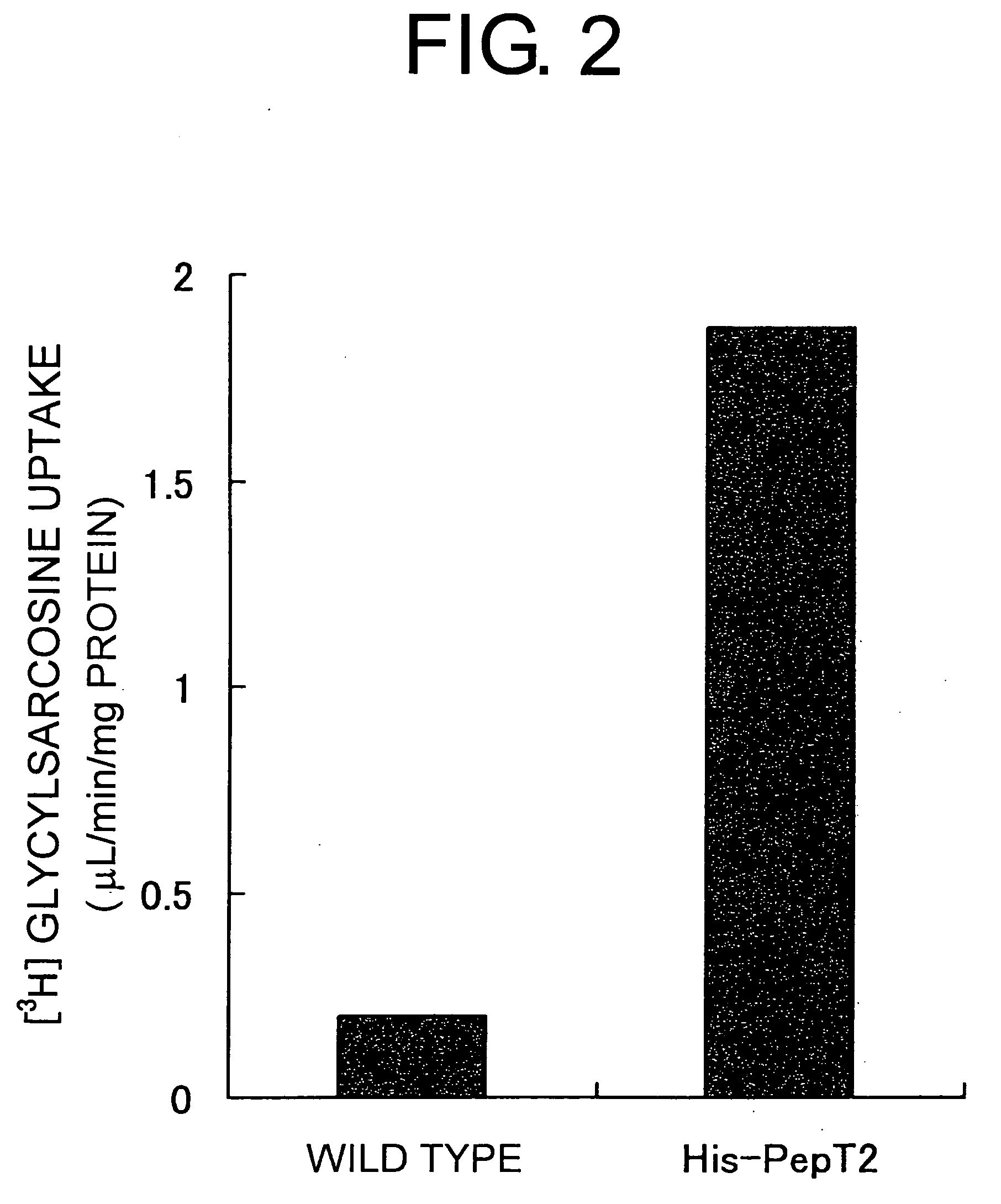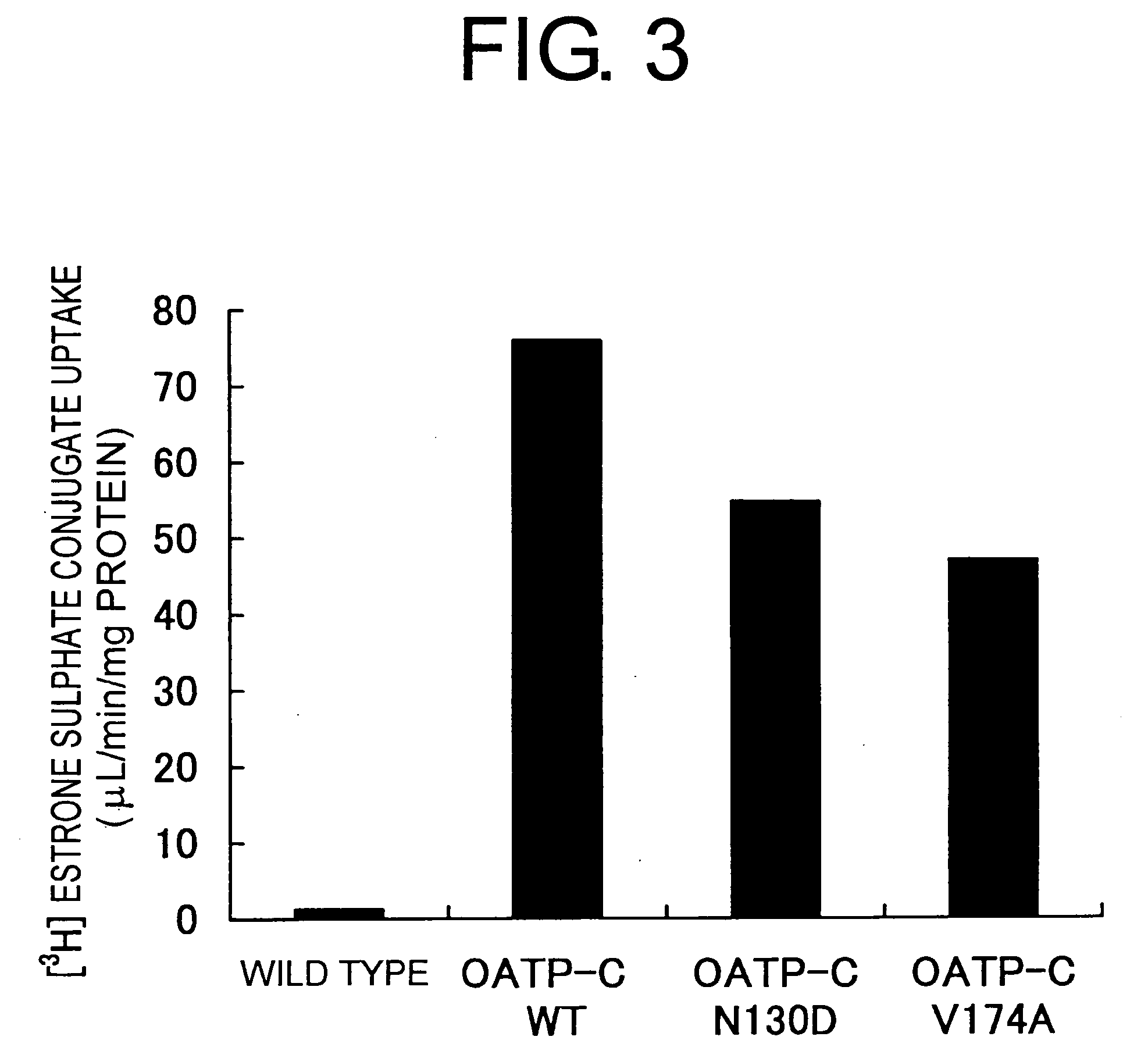Method of screening transporter inhibitor
a technology of transporter activity and inhibitor, which is applied in the field of methods for expressing transporters having transporter activity, can solve the problems of low activity ratio, difficult measurement of transport activity, and difficulty in carrying out kinetic analysis, and achieves high activity
- Summary
- Abstract
- Description
- Claims
- Application Information
AI Technical Summary
Benefits of technology
Problems solved by technology
Method used
Image
Examples
example 1
1. Preparation of PepT1-Expressing Budding Baculoviruses
[0086] A full-length PepT1 gene was isolated from a human kidney library using PCR. By inserting the full-length human PepT1 gene into pBlueBacHis2A (Invitrogen), the pBlueBacHis-PepT1 transfer vector was constructed. A Bac-N-Blue transfection kit (Invitrogen) was then used to introduce this transfer vector into Sf9 cells, along with Bac-N-Blue DNA. Thus, a recombinant virus for the expression of human PepT1 was constructed. Specifically, 4 μg of pBlueBacHis-PepT1 was added to Bac-N-Blue DNA, and then 1 mL of Grace's medium (GIBCO) and 20 μL of cell FECTIN reagent was added. This was mixed, incubated for 15 minutes at room temperature, and then added drop-by-drop to 2×106Sf9 cells washed once with the Grace's medium. After incubating for four hours at room temperature, 2 mL of complete medium (Grace's medium which comprises 10% fetal bovine serum (Sigma), 100 units / mL penicillin, and 100 μg / mL streptomycin (GIBCO-BRL)) was ad...
example 2
1. Preparation of PepT2-Expressing Budding Baculoviruses
[0090] The full-length PepT2 gene was isolated from a human kidney library. PCR was used to integrate the gene encoding the full-length human PepT2 into pBlueBacHis2A (Invitrogen), and a full-length PepT2 transfer vector (pBlueBac) was constructed. This vector was introduced into Sf-9 cells along with the viral DNA. After cloning the recombinant virus constructed by homologous recombination, a stock with a high recombinant virus activity was constructed. Sf-9 cells were infected with the stock virus, and after culturing for a certain period, PepT2 was expressed in the virus and on the membrane of Sf-P cells. PepT2 expression in the virus and on the membrane of the Sf-9 cells was confirmed by Western analysis using anti-His antibodies. More specifically, except for using the PepT2 gene, operations were carried out according to the methods described in Example 1.
2. PepT2 Functional Analysis
[0091]3H glycylsarcosine was dilute...
example 3
1. Preparation of OATP-C Expressing Baculoviruses
[0093] cDNA encoding wild type human OATP-C (OATP-C WT) was cloned as follows. Specifically, adult human liver-derived cDNA was used as a template, and the OATP-C WT cDNA was divided into two fragments and amplified using PCR with the following primer combinations:
5′sideOAHC17 primer.5′gat ggt acc aaa(SEQ ID NO: 1)ctg agc atc aac aacaaa aac 3′OAHC18 primer:5′gat ggt acc cat(SEQ ID NO: 2)cga gaa tca gta ggagtt atc 3′3′sideOAHC21 primer:5′gat ggt acc tac(SEQ ID NO: 3)cct ggg atc tct gttttc taa 3′OAHC22 primer:5′gat ggt acc gtt(SEQ ID NO: 4)tgg aaa cac aga agcaga agt 3′
[0094] Each of these fragments were subcloned to pT7Blue-T vector (Novagen), and clones without PCR errors were selected. Both were linked at the BglII site which exists in an overlapping region, and then cleaved at the KpnI site that exists on both ends. After incorporation at the KpnI site of pcDNA3 vector (Invitrogen), pcDNA3 / OATP-C WT was obtained.
[0095] Next, wit...
PUM
 Login to View More
Login to View More Abstract
Description
Claims
Application Information
 Login to View More
Login to View More - R&D
- Intellectual Property
- Life Sciences
- Materials
- Tech Scout
- Unparalleled Data Quality
- Higher Quality Content
- 60% Fewer Hallucinations
Browse by: Latest US Patents, China's latest patents, Technical Efficacy Thesaurus, Application Domain, Technology Topic, Popular Technical Reports.
© 2025 PatSnap. All rights reserved.Legal|Privacy policy|Modern Slavery Act Transparency Statement|Sitemap|About US| Contact US: help@patsnap.com



